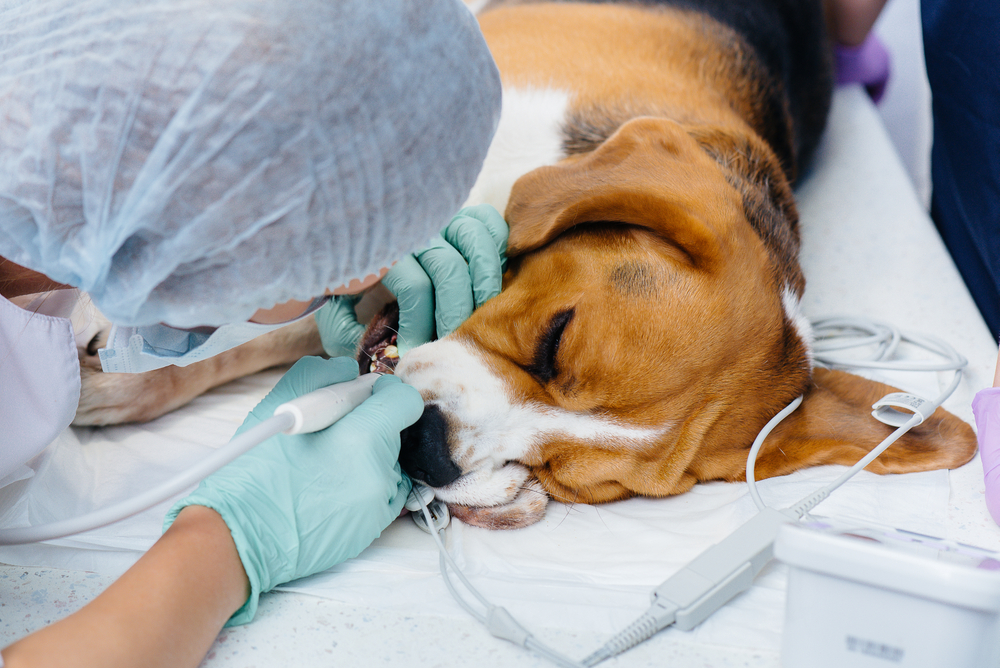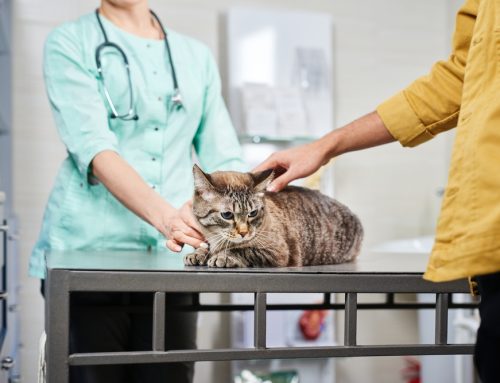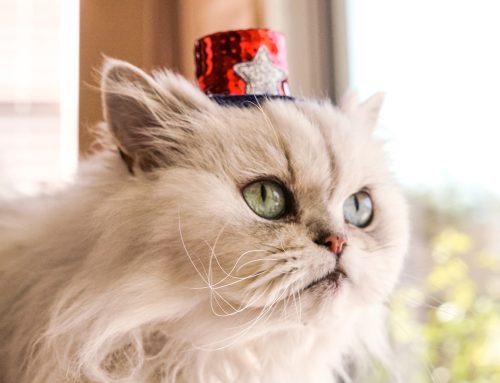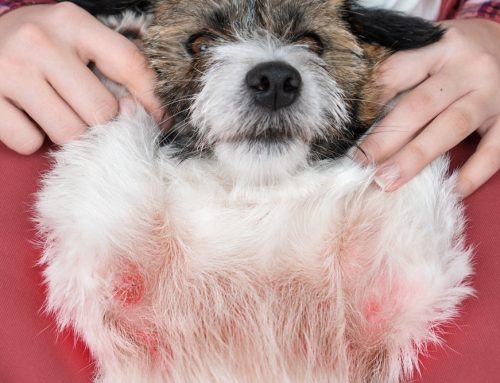Veterinary medical professionals must administer anesthesia to provide your pet essential—at times, lifesaving—treatment in a pain- and fear-free environment. Although our Twin Maples Veterinary Hospital veterinary professionals often administer anesthesia, its use is never routine. Our conscientious anesthesia administration protocols reflect our patient safety and health commitment.
Anesthesia for pets
An anesthetized patient experiences complete sensation loss in the target area. Anesthesia types are categorized by depth, and include:
- Local anesthesia— Local anesthesia’s numbing effects pertain to a specific body region. Local anesthesia can be combined with general anesthesia for uses such as dental nerve blocks.
- Sedation — Sedation is typically administered intramuscularly or intravenously, with the sensation-loss depth ranging from light to deep. Sedation alleviates your pet’s anxiety, and can help with proper X-ray positioning, or be administered as a general anesthesia precursor.
- General anesthesia — Under general anesthesia, your pet experiences a complete—but carefully controlled—loss of consciousness and physical sensation, which is necessary for their veterinarian to safely perform precise procedures (e.g., high-level diagnostic imaging, painful treatments, surgeries).
Humans’ physicians and dentists may use additional anesthesia types (e.g., twilight anesthesia, conscious sedation), but veterinary professionals do not need these types because, unlike humans, animals do not drive or need to make their own care decisions after medical procedures.
Pets’ common anesthesia risks
Although anesthesia is never risk-free, veterinary anesthesia is relatively safe. The overall anesthetic death risk for dogs is 0.17% and for cats is 0.24%, and lower still for healthy pets—0.05% for dogs and 0.11% for cats. The most common causes for anesthesia-related complications include:
- Conformation — Brachycephalic (i.e., flat-faced) dogs and cats have a naturally small airway, and may experience respiratory distress.
- Patient size — Extremely small pets may be difficult to regulate under anesthesia.
- Body condition — Excess body weight strains pets’ cardiovascular system.
- Shock — Emergency situations (e.g., physical trauma, bloat, severe pain) can create a cascade of shock-related abnormalities, including cardiac arrest.
- Pre-existing conditions — Underlying heart issues, liver or kidney disease, and some types of cancer may create anesthetic complications. Fortunately, pre-anesthesia screenings identify many of these conditions.
Pet anesthesia safety
As an American Animal Hospital Association (AAHA)-accredited practice, Twin Maples Veterinary Hospital complies with the most stringent anesthesia safety practices. In addition to our standard protocols, we tailor each patient’s anesthesia medications to suit their age, health, breed, and anxiety level. This customized approach ensures each pet undergoes a smooth and stress-free experience.
Our anesthesia safety protocol begins before your pet’s procedure, and may include:
- Pre-anesthesia exam — For scheduled (i.e., non-emergent) procedures, this examination is part of your pet’s initial appointment. In addition, an abbreviated exam is performed on the surgery day.
- Blood work and urinalysis — Depending on your pet’s age and health history, lab work may be performed to identify potential adverse conditions (e.g., anemia, clotting disorders, infection, organ dysfunction) that could cause intraoperative or postoperative complications.
- Diagnostic imaging — We may need X-rays or ultrasound to identify lung changes or abdominal abnormalities.
On your pet’s procedure day, our anesthetic safety measures include:

- Preoperative medication — Anxiety and stress can trigger inflammation in the body and worsen preoperative pain. We administer a light sedative and analgesic to help your pet relax.
- Intravenous catheter — Once your pet is calm, we place an intravenous (IV) catheter in their front or rear leg. The catheter allows for medication and fluid administration, and provides direct access in an emergency situation.
- IV fluids — Anesthesia medications can cause low blood pressure, and fluids support healthy circulation.
- Endotracheal tube — Once anesthesia is induced and your pet is fully relaxed, we pass an endotracheal tube into their airway to provide a secure exchange for oxygen and anesthetic gas. The tube also protects your pet’s lungs from debris (i.e., aspiration).
- Inhalant anesthesia — Once the endotracheal tube is in place, your pet is connected to an anesthesia machine that delivers a steady oxygen and anesthetic gas flow. The oxygen and gas levels are each carefully titrated to match your pet’s lung size and anesthetic depth.
- Dedicated anesthetist — From anesthesia induction to recovery, a dedicated veterinary technician cares solely for your pet, continuously monitoring them and informing the veterinarian if an adverse condition arises.
- Electronic monitoring — A multi-parameter vital monitor continuously measures your pet’s heart and respiratory rate, cardiac electrical activity, blood oxygenation, blood pressure, and core temperature.
- Heat support — An anesthetized pet’s body temperature does not self-regulate, so we provide gentle warming through pet-safe heated blankets, warm towels, and a heated table.
- Pain management — Pain is assessed and treated as the fourth vital sign. If your pet seems painful, their dedicated veterinary technician will ask the veterinarian to provide additional medication.
- Recovery — Your pet will feel vulnerable during anesthesia recovery, so we transfer them to a warm, quiet cage, continuing close monitoring until they are extubated, alert, and able to maintain their body temperature without supportive measures.









Leave A Comment